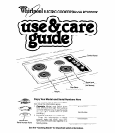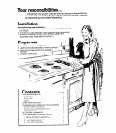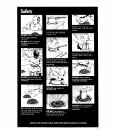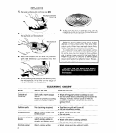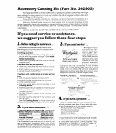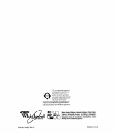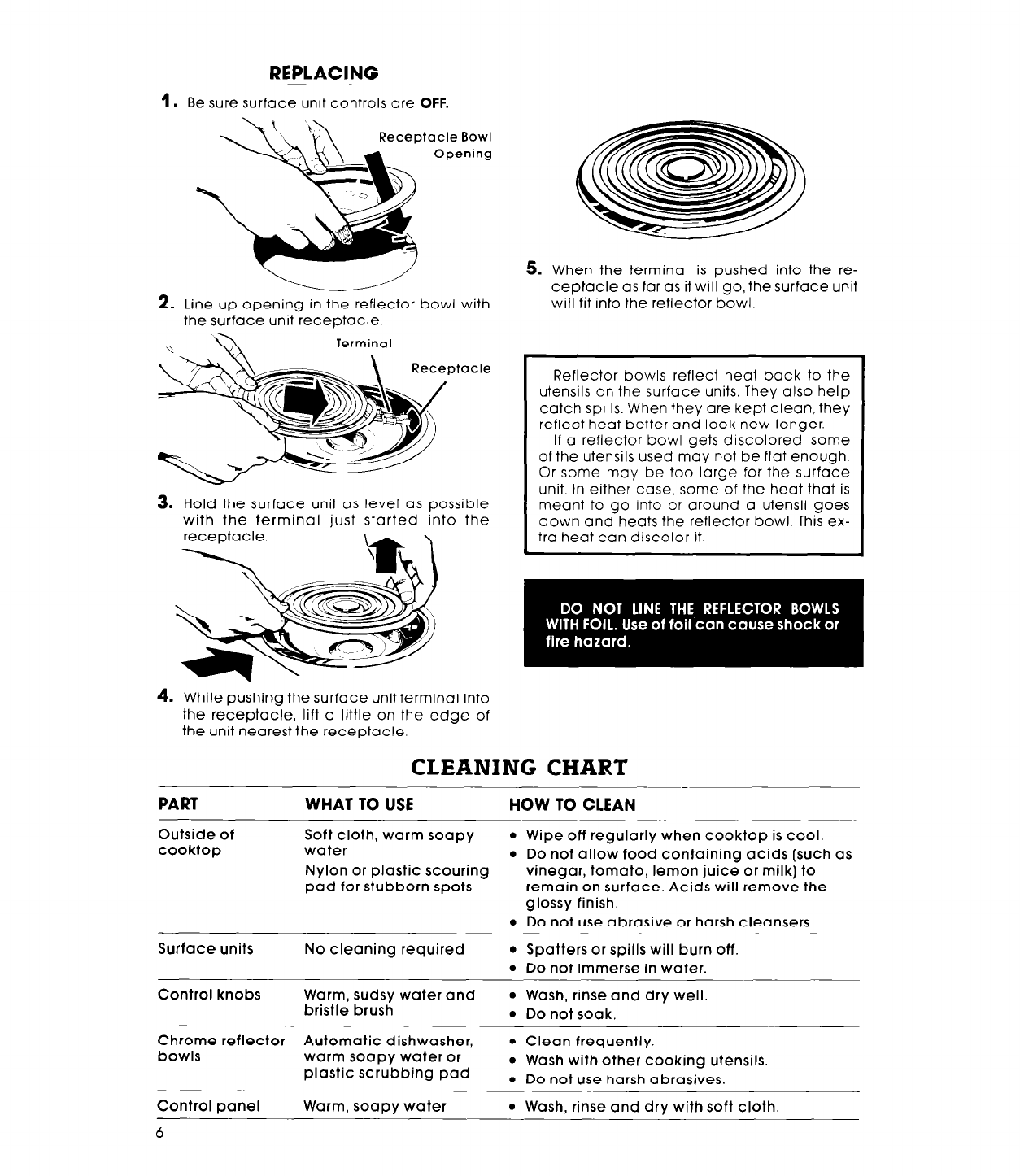
1.
Be sure surface unit controls are OFF.
Receptacle Bowl
Opening
2. Line up opening in the reflector bowl with
the surface unit receptacle.
Terminal
ptacle
3. Hold the surface unit as level as possible
with the terminal just started into the
receptacle.
5. When the terminal is pushed into the re-
ceptacle as far as it will go, the surface unit
will fit into the reflector bowl
Reflector bowls reflect heat back to the
utensils on the surface units, They also help
catch spills. When they are kept clean, they
reflect heat better and look new longer.
If a reflector bowl gets discolored, some
of the utensils used may not be flat enough.
Or some may be too large for the surface
unit. In either case, some of the heat that is
meant to go into or around a utensil goes
down and heats the reflector bowl. This ex-
tra heat can discolor it.
4. While pushing the surface unit terminal into
the receptacle, lift a little on the edge of
the unit nearest the receptacle.
CLEANING CHART
PART
Outside of
cooktop
WHAT TO USE
HOW TO CLEAN
Soft cloth, warm soapy
l
Wipe off regularly when cooktop is cool.
water
l
Do not allow food containing acids (such as
Nylon or plastic scouring
vinegar, tomato, lemon juice or milk) to
pad for stubborn spots
remain on surface. Acids will remove the
glossy finish.
l
Do not use abrasive or harsh cleansers.
Surface units No cleaning required
l
Spatters or spills will burn off.
l
Do not immerse in water.
Control knobs
Warm, sudsy water and
bristle brush
Chrome reflector Automatic dishwasher,
bowls warm soapy water or
plastic scrubbing pad
l
Wash, rinse and dry well.
l
Do not soak.
0 Clean frequently.
l
Wash with other cooking utensils.
l
Do not use harsh a brasives.
Control panel
Warm, soapy water
l
Wash, rinse and dry with soft cloth.
6



